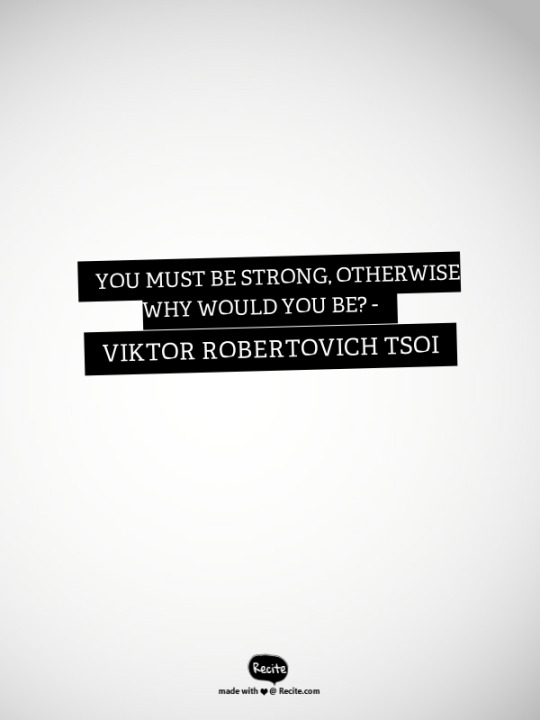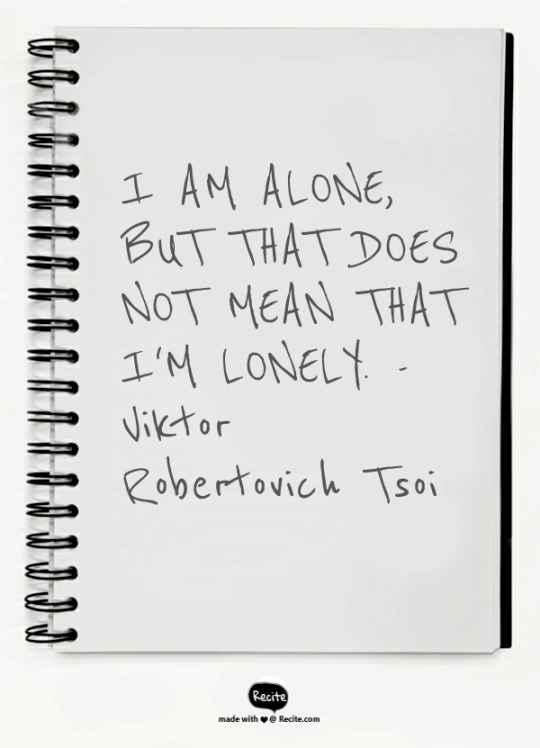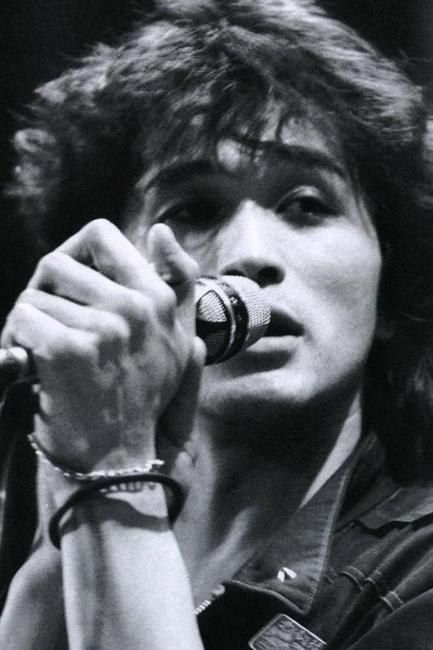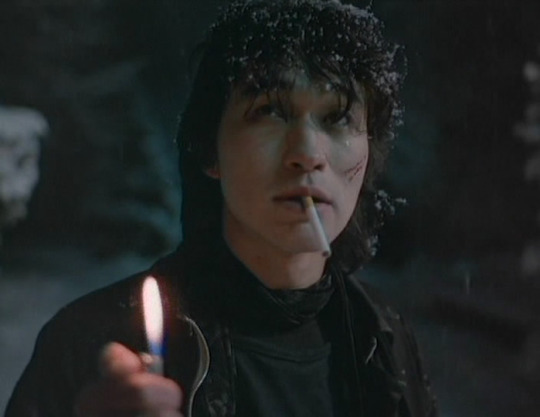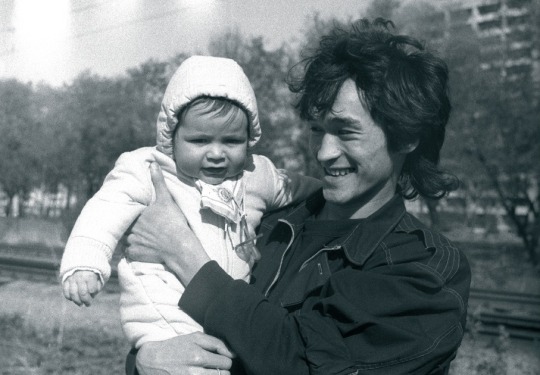Photo

Happy Belated 54th Birthday, Vitya!
Yesterday, June 21st, in 1962, Viktor Robertovich Tsoi was born.
Were he alive today, he would have celebrated his 54th birthday yesterday.
For those unfamiliar with Tsoi, Tsoi was a rock composer and songwriter, frontman and founder of the Soviet Rock band,Kino (“Cinema” in Russian).
His poetic lyrics, often charged with political and social commentary criticizing the failing government, contemplating the depth of working-class struggles, or aptly articulating the emotional strains of complex relationships, combined with his melancholic, richly layered melodies have secured him as a beloved icon in Russian (and various former Soviet Union countries) culture(s).
Typically, most rockers’ biographies consist of alcohol and drug-fueled lifestyles- as well as some embarrassing episodes of less than decent conduct.
However, Tsoi proved atypical with his calm, quiet nature. According to friends, he was decidedly shy, lacked talent to tell funny jokes, but preferred engaging in sports (karate).
Tsoi and his work exuded a sincerity and an insight much of the music world abroad lacked (and lacks).
ussia Beyond the Headlines:
Unlike other heroes of Russian underground rock music, he sang as if there had been nobody and nothing before him; as if he was singing for the first and last time. He was a figuratively naked person who inhabited a naked earth in a realm devoid of cultural context. Earth, sky, stars, sun, death, love, summer: these are the driving words of his songs. The context has died, changed and sunk into the past, but the words spoken by Tsoi ring true to this very day.
As journalist Brian Whitmore aptly attributed to Tsoi’s contribution to Soviet and post-Soviet culture:
Viktor Tsoi embodied late-Soviet cool before it was overtaken by post-Soviet kitsch and defined late-Soviet hip before it was overrun by post-Soviet glitz.
He epitomized late-Soviet sincerity before it gave way to post-Soviet cynicism and channeled late-Soviet angst before it morphed into post-Soviet nihilism.
Tsoi – who died in an automobile accident a quarter of a century ago, on August 15, 1990, at the tragically young age of 28 – would be in his 50s today.
We never got to see Tsoi in middle age. Like all iconic figures who die before their time, the trail-blazing Soviet rocker remains frozen in our minds: iconoclastic and irreverent, clad in black jeans and a T-shirt, a wild mane of black hair flopping in the breeze.
A guitar in his hand and a cigarette dangling from his mouth. Always a cigarette dangling from his mouth.
Tsoi is a reminder of a more hopeful time – one that probably seems even more hopeful in retrospect. A time of introspection and anxiety, but also a time of promise. A time when anything and everything seemed possible.
Tsoi’s diligence in each performance proved genuine as well:
“For the most part, it doesn’t really matter to me where I’m playing: my apartment, an underground club, or a concert hall with 10,000 people,” Tsoi insisted. “If I have an opportunity to play, I play. If I don’t, I am ready to play free of charge. Right now I have an opportunity to play for big crowds. I’m taking advantage of this opportunity, but I know it won’t last forever. Either way, I’m doing what I love. Of course, I’m doing it so long as the circumstances allow me to, including the political climate in the country.”
Happy Birthday, Vitya.
May you be enjoying your day in the great Beyond, exchanging Marlboros with (Ian) Curtis and learning to master nun-chucks from Bruce Lee.
*
*Referring to frontman of the band, Joy Division, whose moody, low-beats influenced Vitya’s latter works. Curtis, like Tsoi, smoked incessantly.(Curtis preferred Benson or Hedges brands, according to friends, Vitya enjoyed Marlboro brand) Apparently, Vitya idolized Lee, was fascinated and wanted to learn using nun-chucks. Never quite got the knack.
Quotes from Viktor Tsoi:
“You must be strong, otherwise why would you be?”
“Everyone should do something that would distinguish it from the others. ”
“I am a free man because I’m always doing what I like and do not do what you do not want.”
“People can not think alike, but to understand each other’s need. Then, they are people.”
“I am alone, but that does not mean that I’m lonely.”
The title and color scheme is derived from two of Tsoi's song, "Star"("Звезда") and "Red and Yellow Days" ("Красно-желтые дни").
Red and Yellow Days:
My train's stalled in the depot Time has come - I'm departing again The wind 's blowing while waiting for me Autumn, sister of mine, is behind the door. After the red and yellow days The winter will begin and end I've got my woe from wit once again Don't be sad, keep going with a smile And I will come back home With a shield, or maybe on it With some silver, or being in need But as soon as I can Tell me 'bout those who are tired Due to ruthless street dramas About the temple made of broken hearts About those who are coming to it After the red and yellow days The winter will begin and end I've got my woe from wit once again Don't be sad, keep going with a smile And I will come back home With a shield, or maybe on it With some silver, or being in need But as soon as I can I dreamed, I saw the Love that reigns I dreamed, I saw the Dream that reigns A star was shining brightly from the sky I woke up understanding - it's grief... After the red and yellow days The winter will begin and end I've got my woe from wit once again Don't be sad, keep going with a smile And I will come back home With a shield, or maybe on it With some silver, or being in needBut as soon as I can
Star:
The howling of wolves and the barking of dogs,
The fist is painfully tight,
Blood beats in the veins like a bird,
Faith, hope and love.
Thousands of hands go up,
And our flag flies high.
The blue sky and the circle of the sun,
Everything is in place, but there is something wrong.
A star shines above us in the sky,
Nobody except it can help us,
In the dark, dark, dark night.
Night fell and the storm came,
The sad rain and wind joker.
Hands in pockets, looking down
And the mum.
Oh, melancholy gnaws at me,
My faithful friend.
Wood walks up, singing and dancing,
I am still with you.
A star shines above us in the sky,
Nobody except it can help us,
In the dark, dark, dark night.
63 notes
·
View notes
Photo

A fantastic collage of V. Tsoi portraits, courtesy of user Kino-Fan (deactivated).
43 notes
·
View notes
Quote
My soul - my songs. And I live in the hope of a better time.
Viktor Robertovich Tsoi
16 notes
·
View notes
Photo



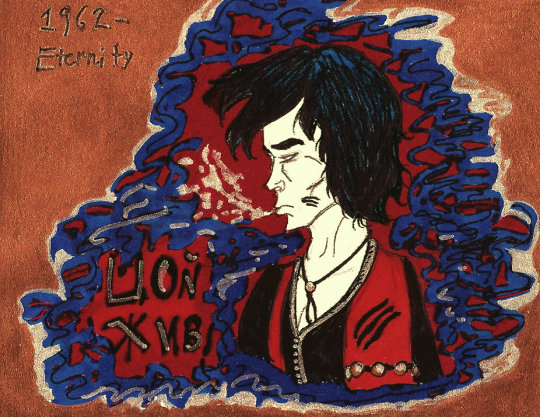

Admin’s own artwork depicting Viktor Tsoi over the past months of discovering the band, Kino.
Top work is most recent, also featuring bassist Yuri Kasparian.
3 notes
·
View notes
Photo



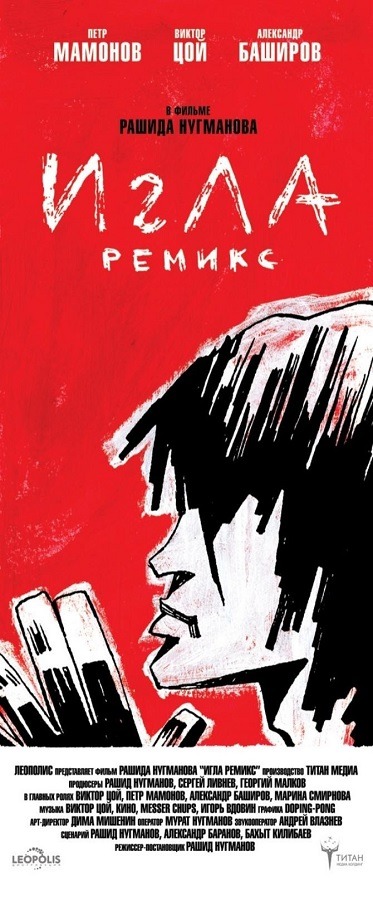





Additional artwork released for the release of the 2010 “Remix” of the iconic 1988 film, “Igla”.
Artwork depicting a backstory integral to the film’s alternate plotline (considerably different from the original 1988 plot) was created by the staff of the Russian indie digital art design Doping Pong (recently embroiled in a controversy of employing imagery that evoked Nazi themes due to featuring Aryan-looking figures for the 2014 Winter Olympics- however, these rumors have been dispelled by the art group itself).
This specific artwork series was not featured in the film itself, but were released for the film’s promotion.
The artwork decidedly evokes heavy Street Art/Graffiti (the stencil structure of line and texture, the “paint-splatter” and ink scribble techniques all stem from Street Art) styles blended with subtle homages to old-school and Golden Age Seinen manga and anime, such as Akira.
Likewise, the artistic vein, with its strong stylization, also pays tribute to the cool, dark, cynical yet heroic (in the urban, anti-romantic sense) image both the character Moro, and the cultural figure, rock icon Viktor Tsoi, embodied for the Soviet/Post-Soviet youth of the late 80′s and early 90′s.
(As a number of Russian cultural observers noted, the character and the persona of Tsoi to Russian youth was reminiscent of Bruce Lee in the 70′s- esp given Tsoi’s own admiration and attempt to emulate the martial artist and cinema star. Doping Pong’s imagery of dragons and nunchucks certainly infer this influence directly.)
Personally, the art style exudes the wonderfully gritty tone not unlike tasteful Indie hip-hop albums. Almost evocative of Samurai Champloo…
2 notes
·
View notes
Photo


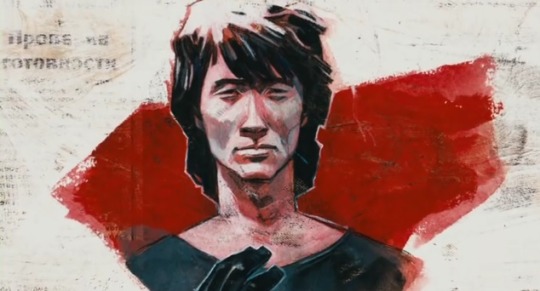

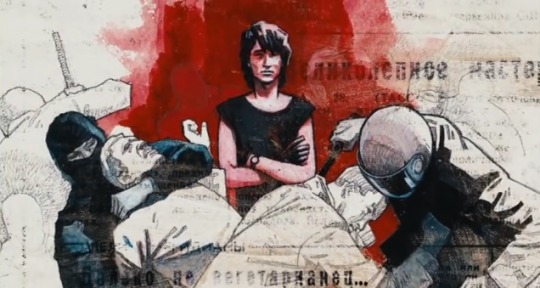

Having watched both the original 1988 version of the film Igla and then immediately afterwards the wildly Kafka-esque “Remixed” 2010 version, Igla Remix, the comic-book-esque artwork along with additional scenes created with Street Art and a quirky compilation of surreal images from film and television certainly enhanced, if not both clarified and confused in some aspects, the already nonlinear plot.
Apparently, a new plot element was added, concerning the main protagonist, Moro and his prior involvement with the secondary character of Spartok. The latter obviously persuaded the former to engage in some sort of illegal public pugilism which was then immediately confiscated by local police. Spartok, while escaping with all the illicit profits, obviously appears to have abandoned his friend Moro to the authorities.
The art style has a refreshingly bold, “scratchy” quality of color punching through the subdued ink-washes tempered with gritty graphite and edged off with post-Soviet style typography.
Overall, the artistic style of rendering the characters’ features and frames-particularly Tsoi as Moro, as featured specifically here- both evokes a rugged realism but likewise a slight exaggeration of facial features not unlike a combination of Repin’s sketches translated through a Mike Mignola stylization.
Considering the above-mentioned use of slight facial exaggeration, initially, I remained undecided if this style proved unflattering to Tsoi and the rest of the cast, but upon later observations, I have concluded the style does evoke a wonderfully “edgy” and “cool” tone that suits Tsoi and the character in the film.
Overall, the positioning and tone of the artwork itself does appear to evoke a strong Poster Art feel, and an extremely subtle nod to hard-edged comics and Seinen manga.
A link to the “Remixed” 2010 version of the original 1988 film:
youtube
4 notes
·
View notes
Photo

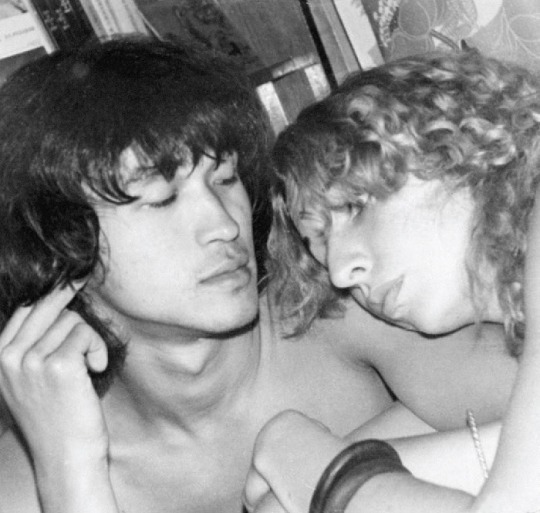


Viktor Tsoi and Marianna Tsoi (nee Rodovanskaya). Photos circa 1982.
3 notes
·
View notes
Photo
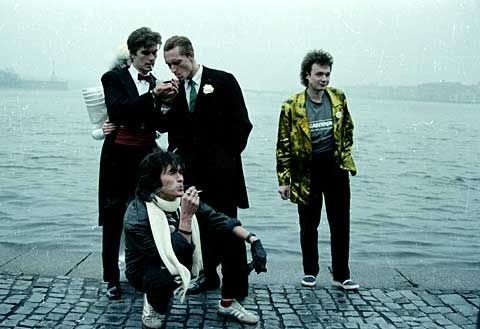
Post Wedding Ceremony of Yuri Kasparian and Joanna Stingray- 1986.
2 notes
·
View notes
Photo


3 notes
·
View notes
Photo
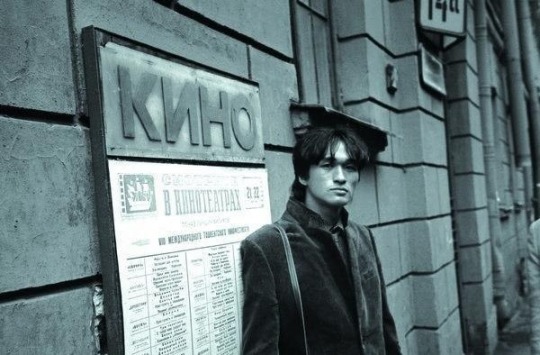

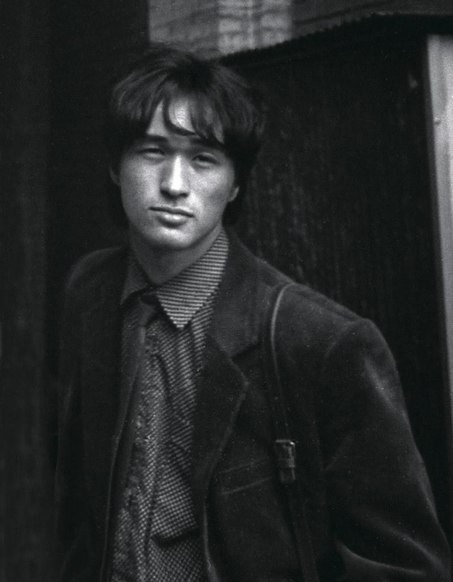



Viktor Tsoi and Georgiy Guryanov, circa 1989?
9 notes
·
View notes
Photo

“Tsoi means more to the young people of our nation than any politician, celebrity or writer. This is because Tsoi never lied and never sold out. He was and remains himself. It’s impossible not to believe him… Tsoi is the only rocker who has no difference between his image and his real life, he lived the way he sang… Tsoi is the last hero of rock.” - Viktor Tsoi’s eulogy in Komsomolskaya Pravda
6 notes
·
View notes
